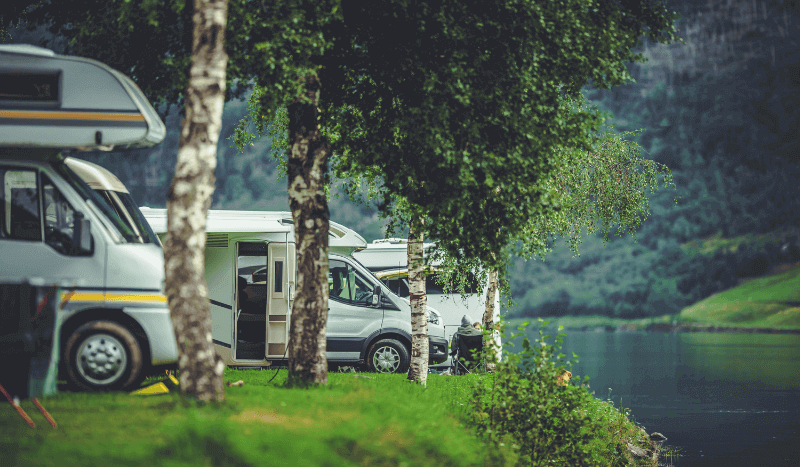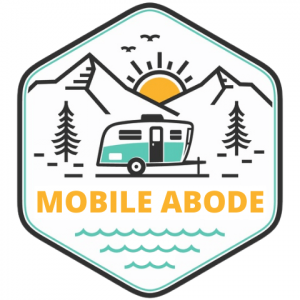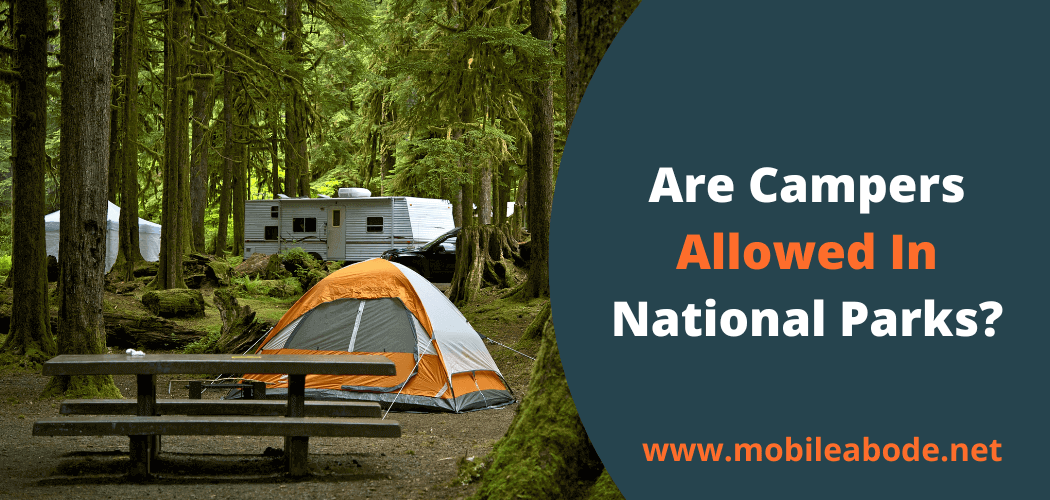National parks are a great place to camp, but are pop-up campers allowed in them? Depending on the park, they may be allowed in some areas and not in others. This blog post will provide an overview of the rules for popup camping in national parks across the United States.
We’ll tell you everything you need to know about camping in national parks with a pop-up camper. We’ll also give you some tips on how to make the most of your trip and highlight a few popular destinations where camping is allowed.
Are Pop Up Campers Allowed In National Parks?
The answer to this question depends on the individual park. Some parks allow pop-up campers in certain areas, while others do not allow them at all. It’s always best to check with the specific park you’re interested in to know what their rules and regulations are and share some tips on where to stay.
Here are a few popular national parks where popup camping is allowed:
- Acadia National Park: You can camp in your pop-up camper at Blackwood’s, Seawall, and Schoodic Woods campgrounds.
- Cuyahoga Valley National Park: You can camp in your pop-up camper at Boston, Buttonbush, and Stanford campgrounds.
- Grand Canyon National Park: You can camp in your pop-up camper at Trailer Village, the only RV park located inside the park.
- Rocky Mountain National Park: You can camp in your pop-up camper at Aspenglen, Glacier Basin, Moraine Park, and Timber Creek campgrounds.
- Shenandoah National Park: You can camp in your pop-up camper at Big Meadows, Dundo Group Campground, Mathews Arm, and Millstream Hollow campgrounds.
- Yellowstone National Park: You can camp in your pop-up camper at Bridge Bay, Canyon, Fishing Bridge RV Park, Grant Village, and Madison Campgrounds.
- Zion National Park: The Watchman Campground is the only place you can camp with your pop-up camper in Zion National Park.
As you can see, there are a few national parks where pop-up campers are allowed. However, it’s always best to check with the specific park you’re interested in visiting to see.
There are both pros and cons to camping in a camper in a national park.
Pros of Camping With Camper in National Park
- One of the biggest advantages is that you can enjoy the beauty of the park while still having some of the comforts of home.
- You can camp in more places because you’re not limited to designated campsites.
- Pop-up campers are often less expensive than other types of RVs.
- They’re easier to set up and take down than tents.
Cons of Camping With Camper in National Park
- One of the main disadvantages is that pop-up campers are not always allowed in national parks.
- This is because they can damage the natural environment. Another downside is that pop-up campers can be more expensive to rent than traditional camping equipment.
- If you are planning on camping in a pop-up camper in a national park, be sure to check with the park beforehand to see if there are any restrictions or fees.
- You might have to pay a fee to use your pop-up camper in a national park.
- Pop-up campers can be more uncomfortable than other types of RVs.
- They’re not as private as tents.
- You might have to share bathroom facilities with other campers.
How to Choose Right National Park for Camping with Pop-up Camper?

There are a few things to consider when choosing the right national park for camping with a pop-up camper.
First: You need to make sure that the national park you’re considering allows pop-up campers. Not all parks do.
Second: You need to consider the cost of camping in the park. Some parks charge a fee for using a pop-up camper. you need to consider the size and weight restrictions of the camper.
Third: You need to think about what kind of amenities you want while camping. Some national parks have full hookups for RVs, while others don’t.
Make sure to check what kind of facilities are available before making your decision.
Fourth: You need to consider the climate when choosing a national park for camping. Some parks can be very hot or cold, depending on the time of year.
Finally: You need to read reviews of the national park you’re considering. This will give you an idea of what other campers have experienced.
By considering these factors, you can choose the right national park for your needs and camping style.
Packing & Preparing Tips for Camping in a Camper to a National Park?
When packing for a trip camping in a pop-up camper, it’s important to pack light. Pop-up campers have limited space, so you’ll want to avoid bringing unnecessary items. Some essential items to pack include:
- Clothing: Bring clothes that are comfortable and suitable for the weather.
- Shoes: Bring a pair of walking shoes and a pair of sandals or flip-flops.
- Toiletries: Pack your toothbrush, toothpaste, soap, and towel.
- Bedding: Bring sheets and blankets for the bed.
- Kitchen Supplies: If you plan on cooking while camping, bring pots, pans, dishes, utensils, and non-perishable food.
- Camping Gear: Bring a tent, sleeping bag, and camp chairs.
- First-aid kit: In case of emergencies, pack a first-aid kit with bandages, gauze, pain reliever, and antiseptic wipes.
By following these tips, you can ensure a safe and enjoyable trip camping in a pop-up camper.
What are national parks safety rules for pop-up campers ?
Pop-up campers are a great way to enjoy the outdoors while still having some of the comforts of home.
However, some rules need to be followed to ensure everyone’s safety.
- First, you must have a valid driver’s license to operate the camper. The camper must also be properly registered and you must have insurance on it. There are size and weight restrictions on pop-up campers, so be sure to check with your campsite before setting up.
- The camper must also be equipped with proper safety equipment such as fire extinguishers and carbon monoxide detectors.
- Finally, you must follow all camping regulations for pop-up campers and vehicles. By following these simple rules, you can ensure a safe and enjoyable trip for everyone involved.
FAQS- Campers Allowed In National Parks?
What is largest travel trailer allowed in national parks?
There is no set size for travel trailers allowed in national parks. However, most parks have weight and length restrictions in place.
For example, the Grand Teton National Park has a 16-foot length limit for all vehicles, including travel trailers.
What is best RV size for national park campsites?
There is no one-size-fits-all answer to this question. It depends on the size of the campsite and the number of people at your party.
For example, if you are camping with a family of four, you will need a larger RV than if you are camping alone.
Are hybrid campers allowed in Yellowstone?
Yes, hybrid campers are allowed in Yellowstone National Park. For example, all hybrid campers must be under 25 feet long and weigh less than 4,000 pounds.
What size RV is allowed in Grand Teton National Park?
There is no set size for RVs allowed in Grand Teton National Park. However, most campsites have length and weight restrictions in place. For example, the Jenny Lake Campground has a 16-foot length limit for all vehicles, including RVs.
Can I drive an RV through Grand Teton National Park?
Yes, you can drive an RV through Grand Teton National Park. And here are few guideline regarding campers camping trip in Grand Teton national park.
- Park has a 16-foot length limit for all vehicles, including RVs.
- RVers must use the Moose-Wilson Road instead of the John D. Rockefeller Jr. Memorial Parkway.
- Overnight camping is not allowed on the parkway.
By following these guidelines, you can ensure a safe and enjoyable trip by driving an RV through Grand Teton National Park.
Summary
The National Park Service (NPS) is a federal agency that manages America’s national parks and promotes outdoor recreation. The NPS has specific rules about what is and isn’t allowed in their parks, including camping.
Campers are allowed in National Parks as long as they follow the rules. There are a few things to keep in mind when camping in a National Park: you must have a permit, park your car in the correct spot, and store all food properly so that it doesn’t attract bears or other wildlife.
Camping can be a great way to experience nature up close and get away from the hustle and bustle of everyday life. If you’re interested in camping in a National Park, be sure to do your research first so that you know what to expect.
By considering the factors above, you can choose the right national park for your needs and camping style.

